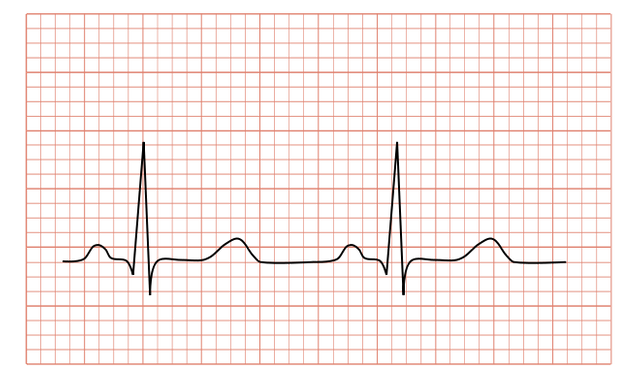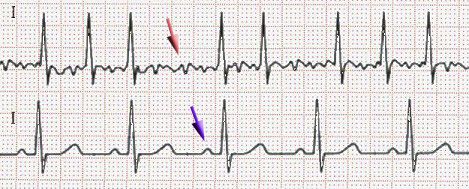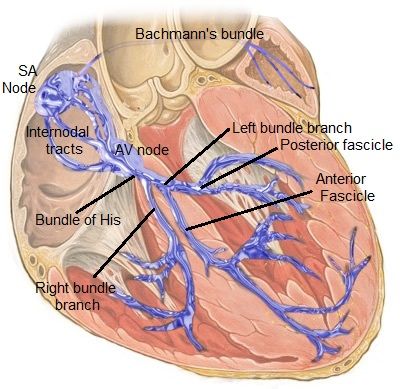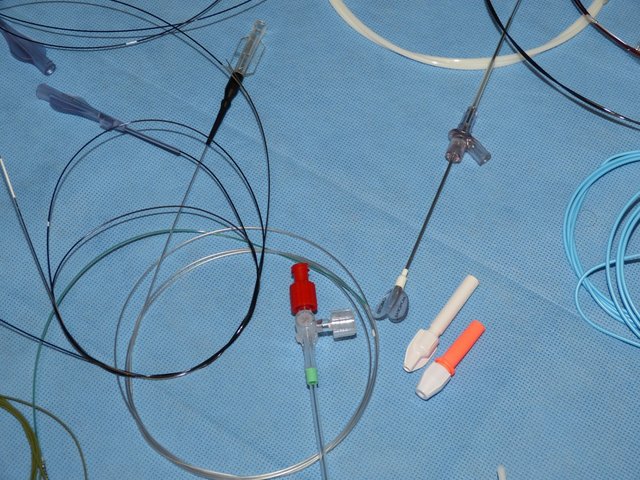Did You Know About Atrial Fibrillation?
I have to admit that I have not heard of this condition before last year, when I was shadowing a cardiologist. He specialized in electrophysiology, which means that he is concerned with disorders of the electrical aspects of the heart that regulate heartbeat and rhythm. Artrial fibrillation was something he was very concerned about as it is not the most known condition, and is usually undetected for a long time because it does not have the most obvious symptoms. Today I want to talk about this arhythmic disorder.
What Is Atrial Fibrillation?
Atrial fibrillation is a condition in which the heart´s atrium beats faster than the ventricles. Basically the heart is divided into four chambers, two small ones on top, two larger ones on the bottom. The small chambers are called the atria and the large chamber are the ventricles. They are all separated by a septum which is interupted by valves, that allows for blood flow in between the chambers. The valves are regulated by pressure that results from the compression of certain areas of the heart, as well as the backflow and accumulation of blood.
As you can see, a heartbeat is a complex cascade of blood flow, pressure build up, contraction, valves opening and closing. All of this is regulated by cells in the heart.
There are only certain nodes (accumulation of specialized cells) in the heart, which generate electrical impulses. These impulses travel along specialized fibers that conduct and spread the electrical impulses from the nodes, triggering the contraction of a specified region of the heart muscle. This allows for a system that is very precisely tuned, preventing arhythmic heartbeats in most healthy individuals.
In atrial fibrillation certain cells that usually do not, suddenly start to generate electrical impulses. Such accumulation of cells that falsely fire electrical signals are called "hotspots". From my shadowing experience, I have learned that most often the cells that surround the connection of the left atrium to the pulmonary veins adopt this ability. These electrical impulses can result in very chaotic contractions of the atria, often resulting in increased heart rates. When these faulty impulses reach the AV node, which regulates the transmission of the "pacemaker" impulse from the atria to the ventricles, it can get over-stimulated. This causes the AV node to not send all the impulses to the ventricles allowing the ventricles to contract at rates that are closer to the standard than the atria (even though they will contract more frequently than under normal conditions). Atrial fibrillation in itself is not directly life-threatening. However, prolonged or chronic atrial fibrillation can cause other cardiovascular diseases and events, such as strokes and heart attacks.
Some Common Symptoms
Symptoms for atrial fibrillation are often overlooked. It is not easy to diagnose atrial fibrillation because the symptoms are usually mild or even not noticed at all. Here is a list of the most common symptoms.
- Heart palpitations (extra beats)
- Dizzines
- Reduced ability to exercise
- Shortness of breath
- Chest pain
Many of these symptoms are common to other diseases and only a ECG can reveal atrial fibrillation.


Ablation - Burning Of Conducting Tissue With Electricity
It sounds bad, but it really is a neat procedure with good success. In ablations, a catheter is inserted into a vein on the inside of your upper legs. The catheter is then shoved into the inferior vena cava , from where it gets into the right atrium. Then the specialist positions the catheter tip at the septum that separates the right and left atria and pokes a small hole through the septum. Through this hole the catheter gets into the left atrium - this is very tidious work. Once the catheter reached the left atrium, a detector that picks up on electrical signals is inserted into the left atrium through the catheter. The electrophysiologist then maps the atrium for electrical activity. I sadly could not find any pictures that show such a map, but I can promise you that those maps are very interesting to look at. They are a 3D representation of the position of your detector and the tissue of the heart.
From the map, the doctor is able to determine where the hotspots are. With a small instrument, the doctor is able to burn tissue precisely where electrical signals are generated and conducted. Every now and then, the detector is used again to map the heart, to verify that the hotspot has been eliminated.
Once the hotspots have been removed, the catheter is removed from the heart and the entry point is closed. The little hole in the septum is not closed (most people have a little hole in their septum anyways, and it is generally not a concern). Once the patient is awake, he or she stays in the hospital for a few days in order to monitor their heart function. Usually the heart is irritated after the procedure for a few days, and sometimes requires to be reset using a defribrilator. However, more often than not, the patient recovers quickly and can leave the hospital. Regular check-ups are required. During the first year, the patient is recommended to get checked by a cardiologist every three months, then every six months. Usually atrial fibrillation is fixed effectively with this procedure.
Possible Causes
Quite frankly, we do not know yet what causes atrial fibrillation. However, it seems like lifestyle plays a major role as most of the patients treated for atrial fibrillation are overweight. There also seems to be genetic predisposition, as also low-risk patients can have atrial fibrillation.
Some other risk factors are alcoholism, too little excercise, not enough sleep and stress. I was told that caffeine may also contribute but I found this meta study, which suggests that caffeine intake may actually decrease the risk of atrial fibrillation.
It is probably a safe bet to lead a healthy lifestyle, with moderate excercise, enough sleep and healthy eating habits.

Shameless Self-Advertisement
I greatly appreciate the time you took to read my post. The time I spent shadowing the electrophysiologist was probably the most enjoyable hospital experience I had. His work is very intesting, and so are the conditions he treats. However, he also reminded me of the importance to life a balanced life and eat healthy.
I wrote most of this post from memory (I did listen when he explained his work to me). This is why I refrained from in-text citations. I will link some sources below.
If you enjoyed this post, please upvote and share. If you find a mistake (looking at the actual future and current doctors) please correct me in the comments (I will then edit my post).
Also big shoutout to @theaustrianguy for his amazing German style guide! It really helped me to up my post style a bit.
Thank you very much again!
As always,
Cheers @lesshorrible!
Sources
American Heart Association
Wikipedia
ScienceDirect
National Heart, Lung and Blood Institute
Mayo Clinic



Wow, I loooove the moving heartbeat illustration!! :D
Haha, I got it from wikipedia (they got great images that you can use without copyright). Cheers!
Like your post bro @lesshorrible thankks for sharing ,Respect for you
Good post. I love these type of educational post. Even more since i work in an emergency room and diagnose these type of problems for a living. Good job :)
Human health is so complex that is really amazing to see healthy people
Cardiology is such an interesting subject anyway ... I once visited the guys from Berlin Heart Center for a job interview, it was quite a highlight (even though I was not accepted for that position).
Actually, the mentioned risk factors are also risk factors for any cardiac or other circulation issues (including stroke). Sometimes one (stroke or TIA) is caused by the other (rhythm issues of heart beat).